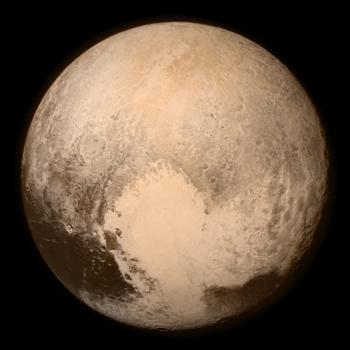New Horizons

atmosphere by New Horizons
Credit: NASA/JHUAPL/SWRI
New Horizons is a spacecraft launched by NASA in 2006. Its primary mission was to study the dwarf planet Pluto, and it's moons. New Horizons finally made it to Pluto in 2015, collecting data about Jupiter on the way to test its instruments.
On board the spacecraft are a host of instruments. There is a dust sensor, three optical cameras, a radio receiver, a thermometer, and a barometer to measure pressure.
In 2015, New Horizons flew 12,500 km above the surface of Pluto. It was the first spacecraft to explore the dwarf planet. The spacecraft discovered new moons of Pluto called Kerberos and Styx. Accurate measurements of the size of Pluto, and it's moon, Charon, were made for the first time.

Credit: NASA/JHUAPL/SWRI
The studies from New Horizons showed that Pluto had a much more active surface than was once thought. There are hints that it once had liquid on the surface. One of the most famous photos from the mission was of a huge heart-shaped glacier on the surface of the dwarf planet. The glacier is about 1000 km wide - the largest in the Solar System!
The probe then moved out into the Kuiper Belt to study the most distant object ever to have a fly by, 2014 MU69. This object is one of the oldest in the Solar System, and it is thought that these Kuiper belt objects were the building blocks for the planets. New Horizons is still exploring the Kuiper Belt. It is trying to find clues to the formation of our Solar System.

